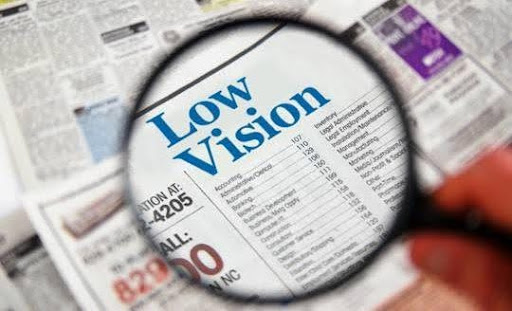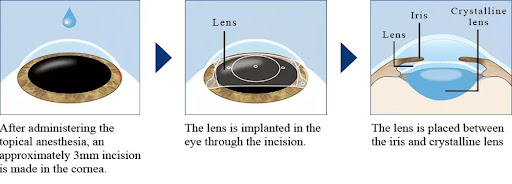Embarking on a journey to understand low vision and rehabilitation is crucial for individuals facing visual challenges. This comprehensive guide aims to shed light on various aspects, providing insights, strategies, and support for those navigating life with low vision from expert eye doctors from Eyeonce Eye Clinic, Dr. Paik Dong Won, and Dr. Jung Sae Rom. From innovative rehabilitation techniques to fostering a positive mindset, this article covers it all.
What is low vision?
Low vision is a significant visual impairment that cannot be fully corrected with glasses, contact lenses, or surgery. It does not imply complete blindness but refers to a condition where individuals experience challenges in seeing and performing daily activities despite optimal visual aids.
Navigating life with low vision requires a holistic approach, encompassing not only visual aids but also emotional support, adaptive strategies, and a positive mindset. Eyeonce Eye Clinic stands at the forefront, offering comprehensive solutions to address the challenges posed by low vision, ensuring a brighter and more independent future for those in need.
Classifications of Visual Impairment
The World Health Organization (WHO) categorizes visual impairment based on the degree of loss of visual function, often using the Snellen notation for visual acuity. The classifications are as follows:
- Normal Vision (0) – No visual impairment; the individual can see and distinguish objects clearly.
- Mild Visual Impairment (1) – Mild loss of visual acuity, typically in the range of 20/30 to 20/60/. The individual may experience difficulties seeing small prints or objects from a distance.
- Moderate Visual Impairment (2) – Moderate loss of visual acuity, often falling within the range of 20/70 to 20/160. Activities like reading or recognizing faces become challenging without visual aids.
- Severe Visual Impairment (3) – Severe loss of visual acuity, typically in the range of 20/200 to 20/400. Individuals may need significant assistance for daily tasks, even with visual aids.
- Blindness (4) – Total loss of light perception or no usable vision. This classification indicates the most profound level of visual impairment.
This notation provides a more detailed understanding of the degree of visual acuity associated with each level of impairment, aiding healthcare professionals, including those at Eyeonce Eye Clinic, in providing targeted interventions and support services.
Causes
Low vision can stem from various underlying factors that affect the eye’s ability to see clearly. Some common causes of low vision are the following:
- Eye Diseases – Conditions like macular degeneration, glaucoma, and diabetic retinopathy can damage the delicate structures of the eye, leading to low vision. It is like having a camera with a multifunctioning lens and sensor.
- Refractive Errors – While glasses or contact lenses can correct many vision problems, sometimes, issues like nearsightedness, farsightedness, or astigmatism can persist, causing low vision even with corrective lenses.
- Eye Injuries – Trauma to the eye, whether from accidents or injuries, can result in permanent damage, impacting vision. It is also akin to a camera lens getting scratched and affecting image clarity.
- Genetic Conditions – Some people are born with genetic conditions that affect their vision. These conditions may progress over time, leading to low vision.
- Age-Related Changes – As we age, changes in the eye, such as cataracts or a reduction in the number of light-sensitive cells, can contribute to low vision.
Understanding the causes of low vision is crucial for effective management and rehabilitation. Eyeonce Eye Clinic specializes in identifying the root causes and tailoring solutions to improve the quality of life for individuals experiencing low vision. Whether through innovative technologies, rehabilitation programs, or emotional support, addressing the underlying causes is key to navigating life with clarity and confidence.
Solar Eclipse-Related Conditions
Low vision encompasses various conditions that result in significant visual impairment. Here are some of its common types:
Loss of Central Vision
Loss of central vision means difficulty seeing objects that are directly in front. It can affect activities like reading, recognizing faces, or focusing on details. Conditions like macular degeneration often lead to a gradual loss of central vision.
Loss of Peripheral (Side) Vision
Loss of peripheral vision involves a reduced ability to see objects or movement in the outer areas of the visual field. Conditions like glaucoma often cause gradual peripheral vision loss, impacting awareness of surroundings.
Blurred Vision
Blurred vision results in a lack of sharpness and clarity in sight. It can be caused by conditions like cataracts, refractive errors, or diabetic retinopathy. Corrective lenses or surgical interventions are often used to address blurred vision.
Reduced Contrast Sensitivity
Reduced contrast sensitivity means difficulty distinguishing between objects of similar tones, especially in low-light conditions. Conditions like macular degeneration or cataracts can contribute to this, affecting the ability to perceive details.
Glare Light Sensitivity
Glare sensitivity refers to discomfort or difficulty in vision caused by bright lights. Conditions like cataracts or corneal issues may amplify sensitivity to glare. Protective eyewear or adjustments to lightning can help manage this symptom.
Night Blindness
Night blindness or nyctalopia is the inability to see well in low-light conditions. Conditions such as retinitis pigmentosa or vitamin A deficiency can contribute to night blindness. It often results in challenges navigating in dimly lit environments.
Understanding these aspects of vision loss is crucial for individuals experiencing visual challenges. Eyeonce Eye Clinic specializes in diagnosing and addressing these conditions, offering tailored interventions to improve overall visual function and enhance the quality of life for those with low vision.
What is low vision?
Low vision rehabilitation is a holistic approach to empowering individuals facing significant visual impairment. It involves a personalized and comprehensive strategy to enhance independence and improve the overall quality of life for those with low vision. Eyeonce Eye Clinic is at the forefront of providing specialized care and support through low vision rehabilitation.
- Assessment and Customization – The journey begins with a thorough assessment of an individual’s visual capabilities and challenges. Eyeonce Eye Clinic’s experts evaluate the specific needs, considering the type of severity of the visual impairment.
- Assistive Technologies – Leveraging cutting-edge assistive technologies is a cornerstone of low vision rehabilitation. Eyeonce Eye Clinic introduces individuals to devices such as screen readers, magnification software, and adaptive tools tailored to their unique requirements.
- Orientation and Mobility Training – Mastering the skills to navigate the environment safely is crucial. Eyeonce’s eye care professionals provide orientation and mobility training, equipping individuals with techniques to travel independently, use mobility aids, and build confidence in various surroundings.
- Counseling and Emotional Support – Living with low vision can be emotionally challenging. Eyeonce recognizes the importance of mental well-being in the rehabilitation process. Counseling services provide a safe space to address concerns, fears, and emotions, fostering a positive mindset and resilience.
- Adapting Environments – Modifying home environments and adapting public spaces are integral to low vision rehabilitation. Eyeonce offers guidance on creating conducive spaces with proper lighting, contrasting colors, and obstacle removal to enhance independence and safety.
- Daily Living Skills Enhancement – Rehabilitation programs at Eyeonce focus on enhancing daily living skills. Individuals learn techniques for tasks like cooking, grooming, and managing finances independently, fostering a sense of accomplishment and self-sufficiency.
- Educational and Vocational Support – Education and employment are vital aspects of a fulfilling life. Eyeonce rehabilitation programs concentrate on enhancing educational and vocational skills, ensuring individuals can pursue their goals and aspirations despite visual challenges.
- Building a Support Network – Eyeonce Eye Clinic emphasizes the importance of a robust support network. Whether through family, friends, or support groups, fostering connections alleviates feelings of isolation and encourages the rehabilitation journey.
Low vision rehabilitation at Eyeonce Eye Clinic is a transformative experience, opening doors to a world of possibilities despite visual limitations. The clinic’s expertise, compassion, and commitment to personalized care make it a beacon for individuals seeking to navigate life with clarity and confidence.
Frequently Asked Questions (FAQs)
Low vision rehabilitation is a personalized approach to empower individuals with significant visual impairment. It involves strategies, technologies, and support to enhance independence and improve quality of life.
Training equips individuals with techniques to travel independently, use mobility aids, and build confidence in various environments.
A robust support network is crucial. Connections with family, friends, and support groups are highly emphasized to alleviate isolation and provide encouragement.
Conclusion
If you or a loved one is facing low vision, take the first step toward a clearer and brighter tomorrow with Eyeonce Eye Clinic. Their expertise, commitment, and compassion to personalized care make them the ideal partner on your journey to low vision rehabilitation. Reach out to Eyeonce today by booking an appointment with their expert eye doctors!



